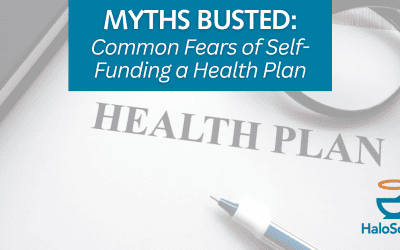As more people begin to recognize that the pharmacy pricing system needs to change, promising alternatives have arisen. One of the most popular alternatives is “cost plus,” in which patients pay the cost of the medication, plus a percentage-based markup to the pharmacy. It sounds good – there is no confusion over pharmacy reimbursements from third-party pharmacy benefit managers. The cost is, in theory, lower for patients, especially those without prescription insurance or who have high deductible plans. Unfortunately, many of these models rely on a faulty premise on which they set their prices – NADAC.
Dr. Phil Baker, PHARMD
What Is a Self-Funded Health Plan?
As more people begin to recognize that the pharmacy pricing system needs to change, promising alternatives have arisen. One of the most popular alternatives is “cost plus,” in which patients pay the cost of the medication, plus a percentage-based markup to the pharmacy. It sounds good – there is no confusion over pharmacy reimbursements from third-party pharmacy benefit managers. The cost is, in theory, lower for patients, especially those without prescription insurance or who have high deductible plans. Unfortunately, many of these models rely on a faulty premise on which they set their prices – NADAC.
Top Pharmacy Trends to Watch in 2025
As we step into 2025, the pharmacy profession finds itself navigating a rapidly changing landscape. Challenges like pharmacy deserts, workforce development, supply chain issues, and PBM reform are reshaping the industry. How will we respond?
Addressing Price Variability in Prescription Drugs: A Case for Group Synchronization
A recent Wall Street Journal article exposes a troubling issue: the extreme variability in pricing for generic medications. These drugs are manufactured by different companies but sold at widely differing prices. Medicare’s payments for these medications, which vary across 2,200 different price points, highlight a fragmented and inefficient market.
The variability in pricing for generic medications isn’t simply a matter of poor negotiation or inefficiency. It’s a structural issue embedded in the market’s reliance on fragmented supply chains.
Medication-Derived Nutrient Deficiencies: Why Patients Who Take Statins May Also Need CoQ10
Statins, including popular medications like Lipitor (atorvastatin) and Crestor (rosuvastatin), are among the most commonly prescribed drugs in the United States. Their ability to lower LDL cholesterol (the “bad” type) has undoubtedly saved countless lives by reducing the risk of heart attacks and strokes.
However, as a pharmacist with more than 20 years of experience, I’ve seen firsthand that every powerful medication comes with trade-offs. One of the most overlooked consequences of long-term statin use is the depletion of a crucial nutrient in the body: Coenzyme Q10 (CoQ10).
Is 503B the New 340B?: The Role of Compounding Pharmacies in the Ever-Evolving Drug Supply chain
GLP-1 drugs for weight loss are popular, effective, and expensive. How should health plans handle increasing prescription costs driven by these medications? It’s complicated, but the bottom line is that although weight loss has many health benefits, the costs of these medications today negate those benefits from a cost standpoint. Read on for more.
Value-Based Pharmacy: An Alternative to Volume-Based Models
Existing payment models for community pharmacies are based on prescription drug sales, a form of fee-for-service reimbursement, which may not sufficiently incentivize the implementation or expansion of pharmacist-based care. The Membership Pharmacy Model may represent a viable alternative by generating pharmacy revenue through membership fees, not prescription drug sales.
Pharmacy Staffing Survey
Pharmacy has changed dramatically. Although it’s (unfortunately) a volume business, pharmacies often struggle with having enough staff to safely care for their patients. In this survey, we hope to gauge what staffing challenges exist in U.S. pharmacies, as well as how to help address them.
How to Improve Patient Access with Telehealth and Virtual Pharmacy Services
Access to health care, especially in rural areas, is often a challenge. Although rural health care is threatened by a wave of rural hospital closures, a recent analysis published in the Journal of the American Pharmacy Association showed that nearly half of Americans live within one mile of a community pharmacy, while 96.5% live within 10 miles of one. Pharmacists have long been the most accessible front-line health care professionals for most people – and that’s even more true as technology advances an ever-evolving health care landscape. Today, telehealth and virtual pharmacy services have emerged as pivotal solutions to address the challenges of medication access, prescription adherence and convenience.
Addressing Corrupt PBM Practices: A Call to Action for Patients, Providers, and Payers
The pharmaceutical industry is at a crossroads, with Pharmacy Benefit Managers (PBMs) playing a central role in driving up prescription drug costs. As revealed in the New York Times article “How PBMs Are Driving Up Prescription Drug Costs,” these middlemen have become a fast-growing and profitable industry, often at the expense of patients and the overall health care system. This paper aims to empower patients, providers and payers with actionable strategies to combat corrupt PBM practices and work toward a more transparent, equitable and patient-centered pharmacy future.











